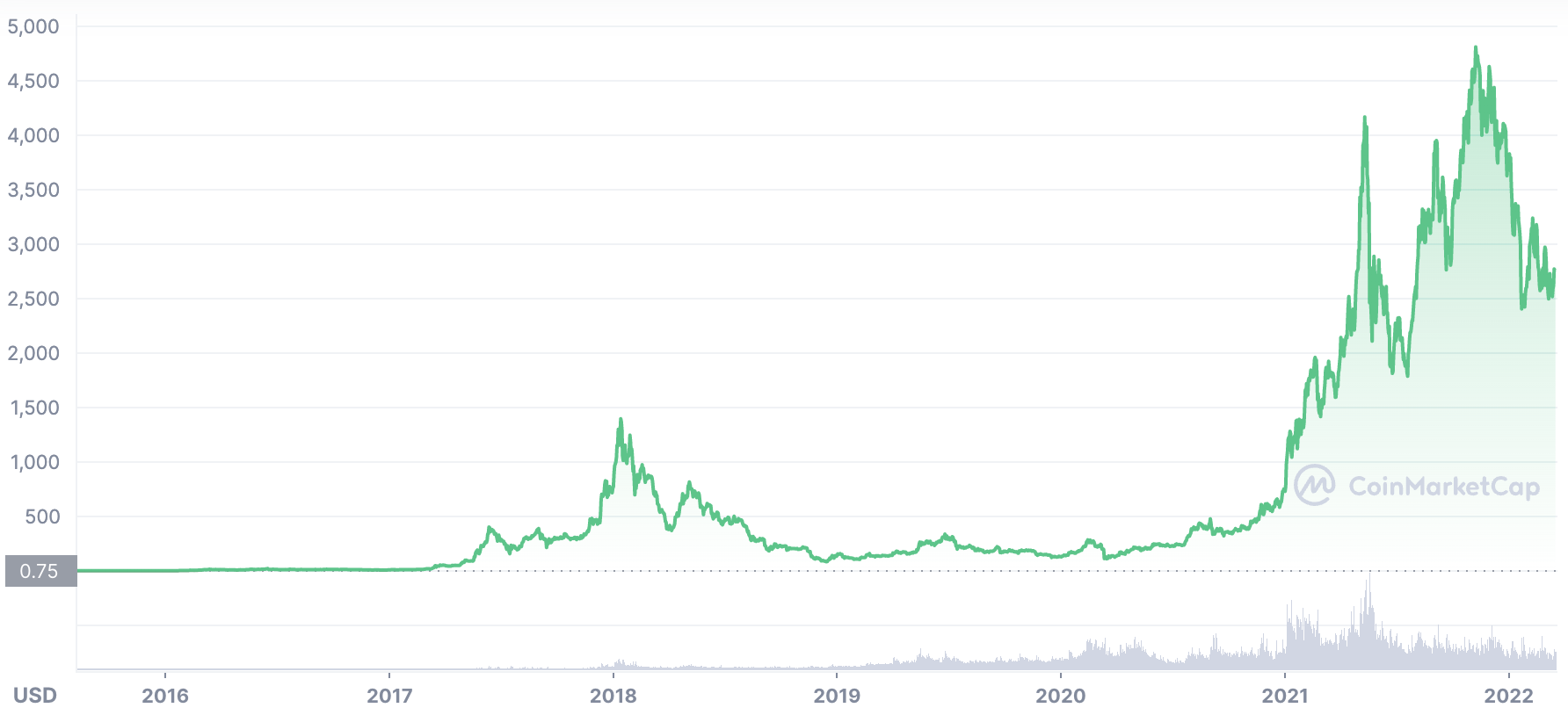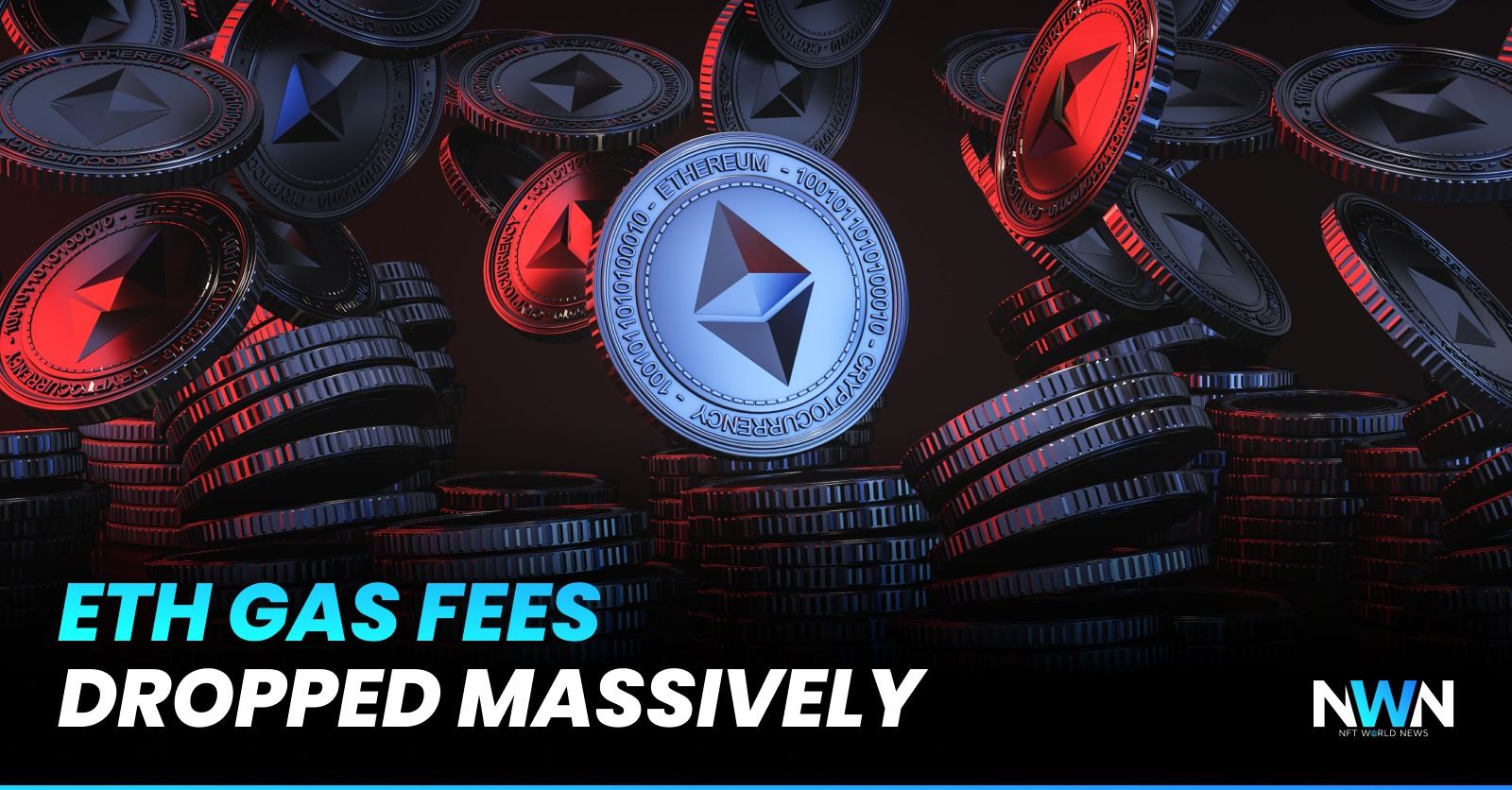Quick Summary
- Ethereum gas fees continue to drop with its price to their lowest level in 6 months. Scalability issues are still present as the transactions fees grow whenever the number of users increases.
Ethereum gas fees or aka transaction fees have been on a continuous drop and reached August 2021 levels. Gas fees of the second-largest currency have been decreasing since the start of this year. This drop is quite significant but it’s still high when compared to other networks like Solana or Polygon.
The transaction cost on the world’s first smart contract blockchain has plunged to its lowest in 6 months. The native token of the Ethereum Network, ETH, is also taking a beating in the market amid the Russian invasion of Ukraine and the high risk of inflation. The driving force behind Ethereum’s ATH in November seems to be waning as macroeconomic conditions tussled with cryptocurrencies.
According to the data from CryptoRank, the seven-day moving average cost of an Ethereum transaction is $11.14. This transaction cost equals the gas fees in August when EIP-1559 was added to the network. After that cost went to as high as $55 but then started to fall till this day.
you might wanna read this: LimeWire Is Coming Back With New NFT Marketplace
Lower Price, lower gas fees

There was a hype around NFTs and DeFi over the last year which led to a high number of users in the network. As more people used ETH to make transactions and buy NFTs, the price of tokens increased alongside gas fees. Many people in the crypto realm have criticized the network for its high gas fees. Developers introduced the upgrades like EIP-1559 to decrease the transaction fees low in the network.
With the start of this year, DeFi and NFTs are still making headlines but this hype is much lower than the previous year. The Crypto market’s value has gone below $2 trillion and many tokens have lost their value. Ethereum alone has lost more than 30% since the start of this year. Ethereum gas fees are calculated in a smaller denomination of ETH known as Gwei. Technically, when the price of the token falls, so do the gas fees.
Scalability issues are still here
The scalability issue is that whenever the number of users increases, the gas fees in the network also increase. ETH gas fees have dropped to their lowest in six months but it doesn’t mean that scalability issues are gone. Ethereum works as a store where people can come and build smart contracts or applications. Despite being the first smart contract platform, Ethereum faces a more competitive market.
Ethereum competitors have found some space in these areas due to high gas fees and slower transactions in the network. Binance (BSC), Solana, and Cardano are significant competitors who have taken advantage of the second largest currency’s scalability issues.
Conclusion
Ethereum transaction fees are dropping but the core issue of scalability remains in the network. The long-awaited upgrade is on the way, ETH 2.0, and there’s hope that this will decrease the transaction cost by improving the scalability of the network.
more to read
Ritestream – The Ultimate FilmVerse In Web3
Magic Eden Partnered With Overtime To Boost Sports NFT Utility
Sandbox and World of Women collaboration will drive female mentorship and education
NFT World News Social Media: Twitter, Instagram, Telegram, Tiktok, Youtube
sources: coinmarketcap, cointelegraph
author: mnmansha
Disclaimer: This article is provided for informational purposes only. It is not offered or intended to be used as legal, tax, investment, financial, or other advice.
Disclaimer: This article is provided for informational purposes only. It is not offered or intended to be used as legal, tax, investment, financial, or other advice.





